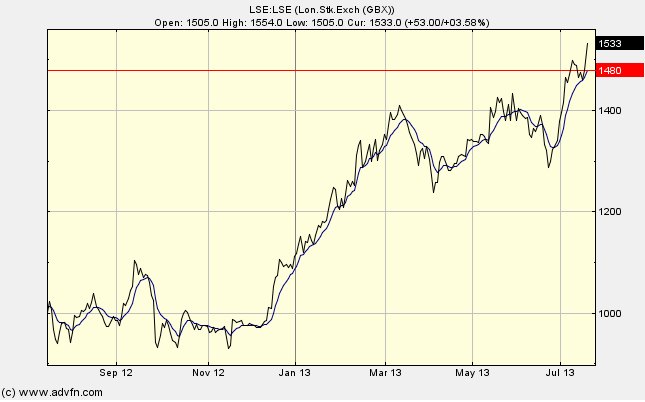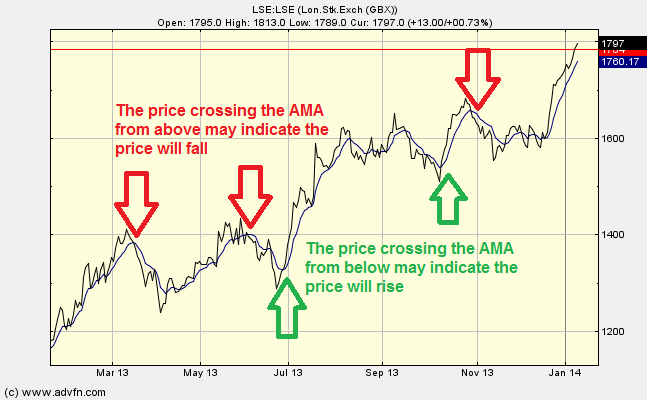Click here to read about Moving Averages.
Similar to the Simple Moving Average. The AMA differs by being more responsive when prices continue to move in one direction, and less so when the price is 'choppy' i.e. when the price fluctuates. Result: AMA changes sensitivity based on volatility.
Parameters: Period, Offset & Weight.
For additional help on what the different parameters mean, that isn't included on this page, click here.
Adaptive Moving Average

Here is an example of a Adaptive Moving Average chart study (on a London Stock Exchange graph)
Advantages are that when the price is highly eratic the AMA defaults to a Simple Moving Average, while if the price is going in one direction, it can be described as a Weighted Moving Average with an exponential decline in weights. Using the 'edit' button you may adjust both the period and the amount that the weight declines by.
AMA Crossings

Here is an example of a AMA crossing the price line (of the London Stock Exchange), and what it may indicate
The AMA gives signals in much the same way as the Weighted Moving Average, but should be much faster in identifying the end of a trend. A buy signal is generated when the price goes higher than the AMA, while a sell signal is generated when the price stays below the AMA.

It looks like you are not logged in. Click the button below to log in and keep track of your recent history.
Support: +44 (0) 203 8794 460 | support@advfn.com
By accessing the services available at ADVFN you are agreeing to be bound by ADVFN's Terms & Conditions